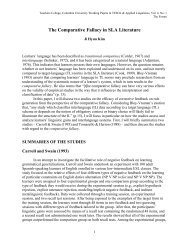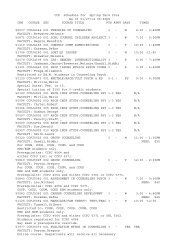UNICEF Mongolia - Teachers College Columbia University
UNICEF Mongolia - Teachers College Columbia University
UNICEF Mongolia - Teachers College Columbia University
Create successful ePaper yourself
Turn your PDF publications into a flip-book with our unique Google optimized e-Paper software.
CHAPTER 1: INTRODUCTION<br />
1<br />
2<br />
3<br />
4<br />
5<br />
6<br />
CHAPTER 1: INTRODUCTION<br />
The Government of <strong>Mongolia</strong> launched a salary reform in 2007 that significantly improved the situaon<br />
of teachers, making the teaching profession more aracve. The base salary was raised significantly;<br />
several salary supplements were integrated into the base salary; and the number of addional teaching<br />
hours that teachers were permied to teach was limited. The 2007 reform was fundamental and was<br />
subsequently accompanied by a series of other regulaons that dealt with ethical standards, licensing<br />
requirements, incenve schemes and promoon regulaons. The recent developments in <strong>Mongolia</strong><br />
reflect an internaonal trend to pay greater aenon to teacher quality and movaon. In an effort<br />
to support the iniaves of the Ministry of Educaon, Culture and Science (MECS), <strong>UNICEF</strong> <strong>Mongolia</strong><br />
provided funds to MECS to analyze more closely the current situaon of teachers in <strong>Mongolia</strong>.<br />
This <strong>UNICEF</strong> <strong>Mongolia</strong> Study on <strong>Teachers</strong> therefore describes the fundamental reforms that took place<br />
over the past few years, then examines their implementaon in pracce, and finally idenfies areas<br />
in need of improvement. The first chapter provides the larger context of the study and presents the<br />
research design of the study.<br />
1.1. EDUCATION FOR ALL VERSUS LEARNING FOR ALL<br />
TEACHERS IN MONGOLIA: AN EMPIRICAL STUDY ON RECRUITMENT INTO TEACHING,<br />
PROFESSIONAL DEVELOPMENT, AND RETENTION OF TEACHERS<br />
16<br />
For the past few years, the effecveness of educaonal reforms—including those funded by development<br />
partners—has been typically measured in terms of whether a reform did indeed enhance student<br />
outcomes. Progress in assessment has been made in two direcons. On one hand, there are discernible<br />
aempts to move away from measuring student outcomes exclusively in terms of standardized test<br />
results. Clearly, the debate on competencies, and most recently on skills, has broadened the earlier<br />
focus on cognive skills. On the other hand, there is a growing number of researchers who are exploring<br />
factors that impact student learning. It is currently widely acknowledged that teacher quality scores very<br />
high among the drivers for student learning. One of the frequently cited studies even claims that teacher<br />
quality is a beer predictor of student outcomes than class size or the money spent per student (see<br />
McKinsey 2007). 1<br />
The emphasis on student outcomes or student learning is reflected in the new educaon sector<br />
strategies of development partners. Both the UK Department for Internaonal Development (DFID) and<br />
the World Bank have moved away from emphasizing access to quality educaon (Educaon for All) and<br />
now propagate access and outcomes of quality educaon. The current DFID strategy is called 2010-<br />
2015 Learning for All, and the recently released World Bank Educaon Strategy 2020 is entled Learning<br />
for All: Invesng in People’s Knowledge and Skills to Promote Development. Governments in different<br />
parts of the world, both in developing and in developed countries, are facing the challenge of how<br />
to best recruit graduates into teaching, to develop effecve teachers, and then to retain them on the<br />
job. The shortage of qualified and effecve teachers is a global phenomenon and has led to numerous<br />
organizaons ranging from the OECD (2005) to McKinsey (2007, 2010) emphasizing the importance of<br />
aracng, developing, and retaining effecve teachers. 2<br />
1 McKinsey & Co. (2007). How the Best Performing School Systems Came Out on Top. London: McKinsey & Co.; see also: McKinsey<br />
Report (2010). Closing the talent gap: Aracng and retaining top third graduates to a career in teaching. London: McKinsey &<br />
Company.<br />
2 OECD. (2005). <strong>Teachers</strong> Maer: Aracng, Developing, and Retaining Effecve <strong>Teachers</strong>. Paris: OECD; McKinsey & Co. (2007).<br />
How the Best Performing School Systems Came Out on Top. London: McKinsey & Co.; McKinsey Report (2010). Closing the talent<br />
gap: Aracng and retaining top third graduates to a career in teaching. London: McKinsey & Company.



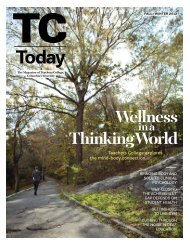

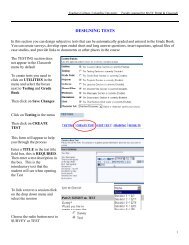


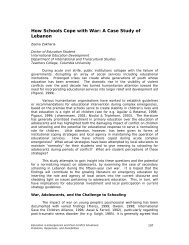
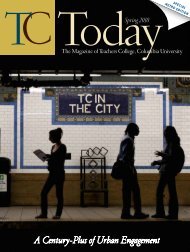
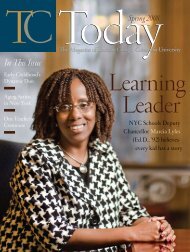



![TC Tod[...].pdf - Teachers College Columbia University](https://img.yumpu.com/27074883/1/190x252/tc-todpdf-teachers-college-columbia-university.jpg?quality=85)

